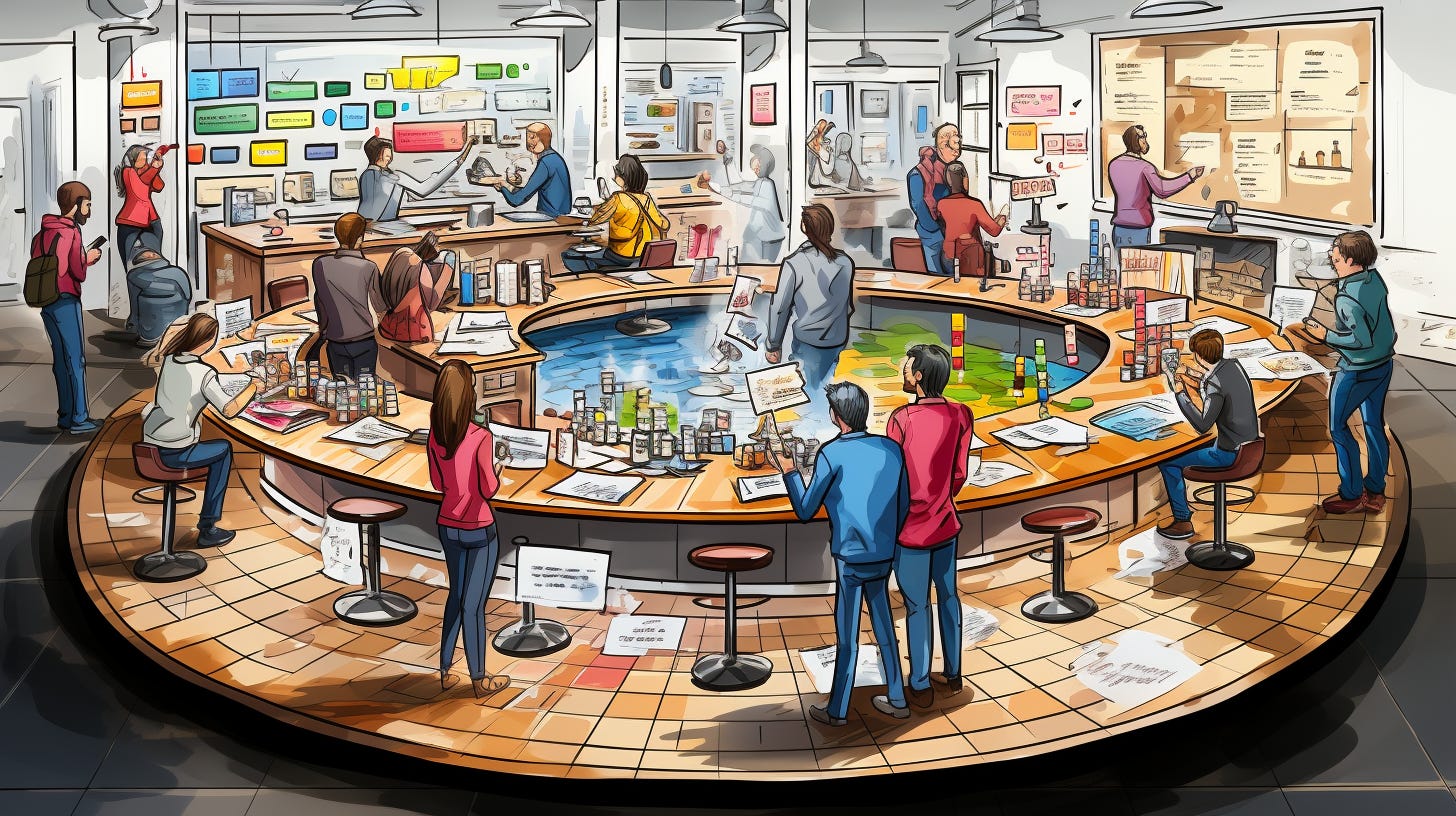AMIA#17 | Decoding Agile and Kanban: Understanding the Synergy
Understanding the Intersection and Leveraging It in Your Team
Aha! Moments in Agility
Live in your inbox every Sunday to help you build valuable software sooner
AMIA: #17
Reading Time: ~ 5 minutes
Hello all.
Welcome to all the new subscribers to the newsletter. Thank you. Please help me improve by providing feedback and asking questions.
In today’s email:
Today, you will understand the distinct characteristics of Agile and Kanban, and how they synergize. You will be able to identify where Agile and Kanban intersect, and how to leverage this synergy in your own teams.
Introduction
Today, you're embarking on an exciting journey to explore the synergy between Agile and Kanban. This is the first part of a two-part series that promises to deepen your understanding of these two concepts and their unique and shared characteristics.
Defining Agile
What comes to mind when you think of agile?
The Merriam-Webster dictionary defines it as the ability to move quickly and easily.
In our world of project management and software development, we expand upon it:
It's about responding effectively to changes - be it customer requirements, market conditions, or technology.
It's about valuing individuals and interactions, customer collaboration, and welcoming change, as outlined in the Agile Manifesto.
It's about creating an environment where teams can adapt quickly and effectively.
Defining Kanban
Now, let's talk about Kanban. It's a term you've probably heard before, but what does it really mean?
Kanban is a visual, pull-based system that optimizes the flow of value through a process.
It originated from the Japanese automotive industry and has since been adopted by various industries to improve efficiency and predictability.
The Kanban system uses visual signals (often a Kanban board) to represent work items, allowing you to see the state of every piece of work at any time.
Kanban: Not Just for Agile
Before we dive into the comparison, it's important to note that Kanban isn't restricted to Agile. As highlighted in this ProKanban post, Kanban is about flow, not agile. It's a system that can be applied in any context, not just in Agile environments.
Agile and Kanban – A Comparison
Now that we've defined Agile and Kanban, let's put them side by side:
As you can see, while both Agile and Kanban aim to improve the way we work, they do so in different ways.
The Synergy between Agile and Kanban
Despite their differences, Agile and Kanban can work together in harmony. To understand this synergy, let's delve deeper into the core principles of each.
Agile : Embracing Complexity and Change
In complex work environments, where predictability is low and the need for adaptability is high, Agile becomes a necessity.
Traditional planning methods fall short because we simply don't know enough to plan accurately. This is where Agile shines.
Agile focuses on defining goals and then iteratively and incrementally stepping towards those goals.
It's about delivering value early and often, and adapting based on feedback and learning. Agile teams embrace change, viewing it as an opportunity to improve the product and deliver greater value.
Kanban: Enhancing Effectiveness, Efficiency, and Predictability
Kanban, on the other hand, emphasizes effectiveness, efficiency, and predictability. But how does it achieve these?
Kanban proposes that we improve these aspects by:
defining and visualizing a workflow,
actively managing items in a workflow,
and continuously improving the workflow.
By visualizing the workflow, teams can see bottlenecks and areas of inefficiency.
By actively managing the workflow, teams can ensure that work is flowing smoothly and that the amount of work in progress is appropriate.
By continuously improving the workflow, teams can become more effective and efficient over time.
Agile and Kanban: A Powerful Combination
So, how do Agile and Kanban work together?
Consider a software development team following Agile principles. They might use a Kanban board to visualize their workflow. This allows them to see bottlenecks and areas of inefficiency, enabling them to adapt and improve their process.
At the same time, the iterative and incremental nature of Agile aligns well with the continuous improvement aspect of Kanban. As the team learns and adapts, they can make changes to their workflow to better reflect their current understanding of the work and the environment.
In this way, Kanban becomes a strategy that supports their goal of agile. It provides a framework for managing work that complements the Agile principles of adaptability and continuous improvement.
Conclusion
In conclusion, while Agile and Kanban come from different origins and have different focuses, they share a common goal: to improve the way we work.
By understanding the unique strengths of each, you can leverage them in a complementary way to achieve true agile.
Stay tuned for the second part of this series, where I'll provide a guide on how to use Kanban as an Agile strategy. Until then, keep embracing the Agile spirit and remember: it's all about delivering value sooner!
When you’re ready…
I can help you in 3 ways:
Check out the resources list
Forecast timelines like a Pro in under 1 minute - Zero Estimate System
Fix the root cause of bugs & defects in your team - Root Cause Analysis Template
Book One on One coaching with me - Become a go-to Scrum Master in your organization.
Find me on LinkedIn and introduce yourself :)



